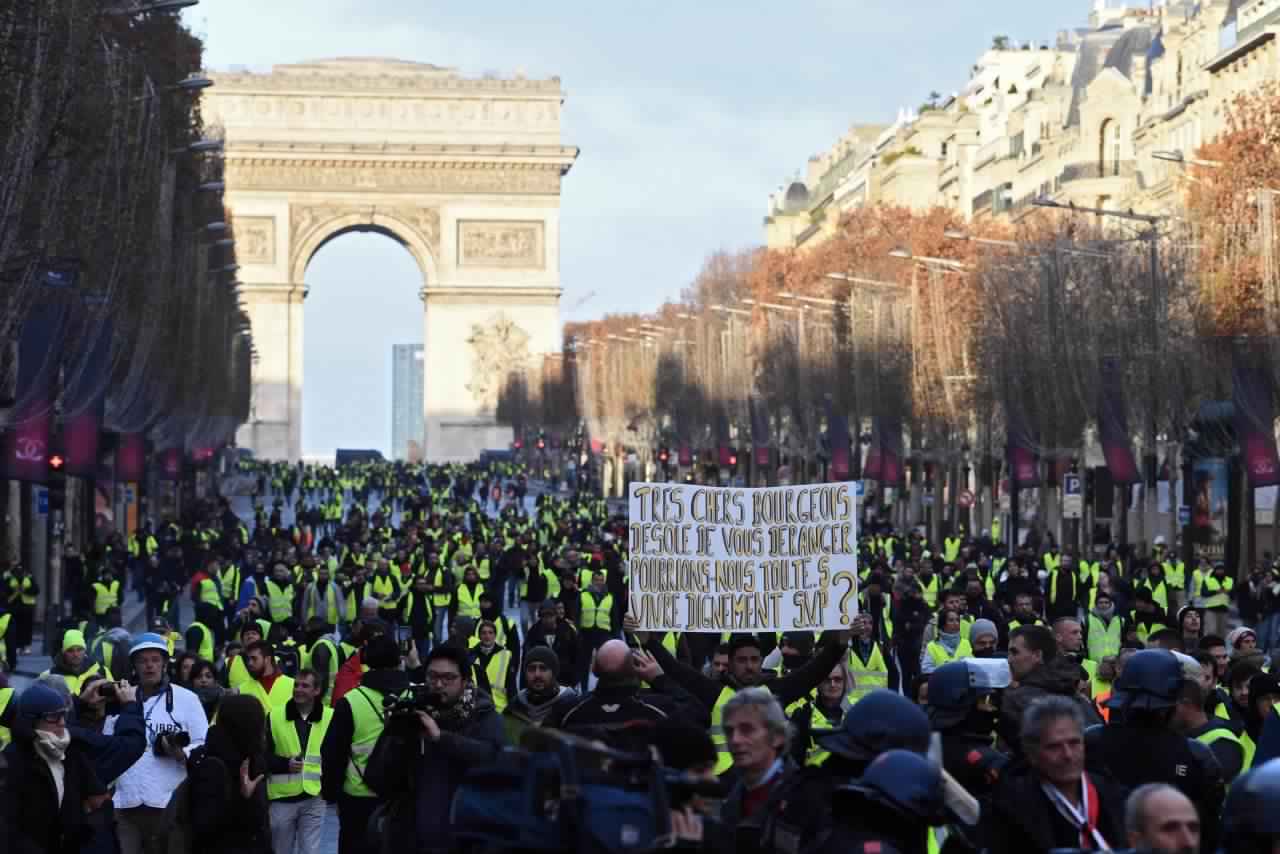
17th November, the day marked the beginning of the protest set to wake up the sleeping presidency of France.
Tens of thousands of citizens wearing fluorescent yellow road safety vests, took to the streets to express their discontent with the rise in fuel taxes, Emmanuel Macron, the president of France, then decided to discard the policy due in January 2019.
The protest, which started off as an outcry of the commoners, mostly rural, evolved into a nationwide issue fueled by the discontent with the president’s recent policies and France’s declining living standards. The protesters comprised of not only the working classes but also students dissatisfied with the current educational reforms.
Emmanuel macron, swept to power in May 2017 by portraying himself as a youthful anti-populist reformer, was unsuccessful in gaining the trust of the masses even after addressing the nation and surrendering to the rioters. The protest only grew larger, even affecting many European countries.
France is well known for the various rebellions that took place in its glorious history, the riot is being called the “the country’s worst riot in decades”. The number of protesters or the “yellow vests” keeps on increasing in France. Considering the protest, president Macron decided to bring about several much demanded changes, apart from discarding the policy of raising the fuel taxes, a rise in the minimum wage; the removal of tax and social charges on overtime; encouragement to employers to give workers a tax-free bonus; and an end to a surcharge on most pensions.
The president had to face a no-confidence vote, which was put forward by the Socialist party over the inability of the presidency on handling the protest which has been terrorizing the country for weeks. Even though, Emmanuel Macron easily sailed through the blatant challenge to his president ship. The yellow vests defied the government and continued their protest for the fifth week.
Being the youngest leader in the history of France after Napoleon, greater action was expected by the president. Disconnected with the ordinary citizens, Emmanuel put forward an image of the president of the rich. Macron stands in the middle of a divided nation. The public is unable to experience the change that the president, the senior executives and the allies are so optimistic about and were supposed to propel. Changes that Macron is trying to bring regarding France’s economy has been tried and tested in countries like the USA and some parts of Europe and suggests that the crossroad at which Macron is standing: the populist or the elite. This is a precarious set of options that any president can have. History is an evidence itself that when the public finally speaks the authorities sit down and listen, and for Emmanuel Macron to regain public support, drastic changes must be taken.

Be the first to comment